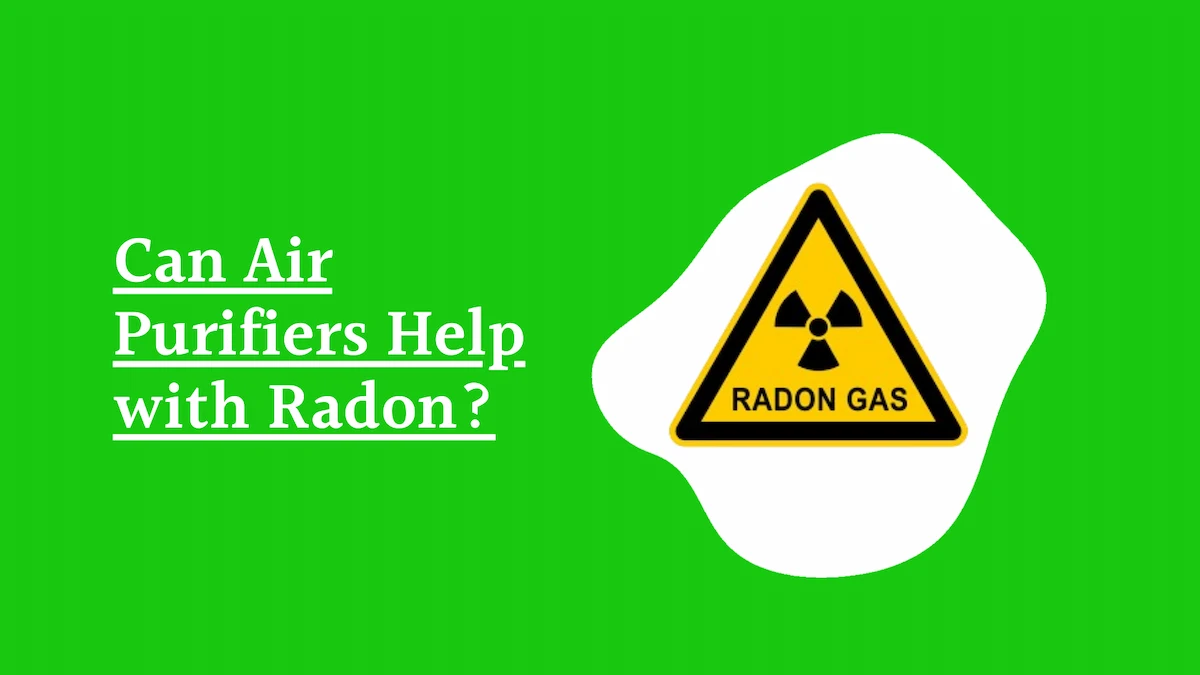Radon gas is a silent killer that can seep into our homes without us even knowing it. Radon gas is a radioactive gas emitted from the natural breakdown of uranium in soil, rock, and water. It lacks odor, taste, and visibility, rendering it undetectable without appropriate testing measures. Prolonged exposure to high levels of radon gas can increase the risk of developing lung cancer, making it a serious health concern.
Air purifiers play a crucial role in reducing radon gas levels in indoor air. They work by filtering out harmful particles and contaminants, including radon gas. By using an air purifier as part of a comprehensive radon mitigation plan, you can significantly reduce the levels of radon gas in your home and protect yourself and your family from its harmful effects.
Understanding Radon Gas and Its Risks to Your Health
Radon gas is formed from the natural decay of uranium in soil, rock, and water. It can enter homes through cracks in the foundation, gaps around pipes and cables, and through the soil. Once inside, radon gas can accumulate to dangerous levels if not properly ventilated.
Extended exposure to elevated levels of radon gas can heighten the risk of developing lung cancer. According to the Environmental Protection Agency (EPA), radon is the second leading cause of lung cancer in the United States, responsible for an estimated 21,000 deaths each year. Smokers are at an even higher risk, as the combination of smoking and exposure to radon gas greatly increases the likelihood of developing lung cancer.
Role of Air Purifiers in Reducing Radon Gas Levels
Air purifiers are an effective tool in reducing radon gas levels in indoor air. They work by filtering out harmful particles and contaminants, including radon gas. By using an air purifier as part of a comprehensive radon mitigation plan, you can significantly reduce the levels of radon gas in your home and protect yourself and your family from its harmful effects.
Air purifiers use various filtration methods to remove particles and contaminants from the air. These methods include HEPA filtration, activated carbon filtration, and electrostatic precipitation. HEPA filtration is particularly effective in removing radon gas, as it can capture particles as small as 0.3 microns in size.
Different Types of Air Purifiers and Their Effectiveness Against Radon
Various air purifiers are accessible in the market, each with unique attributes that excel or fall short in mitigating radon gas levels.
- HEPA air purifiers are highly effective at capturing particles as small as 0.3 microns in size, including radon gas. They are particularly effective when used in conjunction with activated carbon filters, which can remove odors and chemicals from the air.
- UV-C air purifiers use ultraviolet light to kill bacteria, viruses, and other microorganisms in the air. While they are not specifically designed to remove radon gas, they can help improve overall indoor air quality.
- Ozone generators are another type of air purifier that is sometimes used to remove odors and chemicals from the air. However, ozone generators can actually increase the levels of ozone in the air, which can be harmful to your health. It is important to avoid using ozone generators as a means of radon gas mitigation.
Choosing the Right Air Purifier for Your Home’s Needs
When choosing an air purifier for radon gas mitigation, it is important to consider your home’s specific needs. Factors to consider include the size of your home, the level of radon gas present, and any specific concerns you may have, such as allergies or asthma.
It is also important to choose an air purifier that is properly sized for your space. The Association of Home Appliance Manufacturers (AHAM) provides guidelines for selecting the appropriate size air purifier based on the square footage of your home.
In addition to size, it is important to consider the filtration methods used by the air purifier. HEPA filtration is highly effective at capturing particles as small as 0.3 microns in size, including radon gas. Activated carbon filters are also effective at removing odors and chemicals from the air.
Tips for Proper Placement of Air Purifiers to Maximize Efficiency
The placement of air purifiers can greatly impact their effectiveness in reducing radon gas levels. It is important to place air purifiers in areas where they can effectively circulate and filter the air.
For maximum efficiency, it is recommended to place air purifiers in areas where radon gas levels are highest, such as basements or crawl spaces. It is also important to avoid placing air purifiers near sources of pollution, such as smoking areas or chemical storage areas.
Additionally, it is important to ensure that air purifiers are not obstructed by furniture or other objects that may impede airflow. Proper placement and airflow are crucial for maximizing the efficiency of air purifiers in reducing radon gas levels.
How to Monitor Radon Gas Levels in Your Home?
Monitoring radon gas levels in your home is essential for ensuring the effectiveness of radon mitigation efforts. There are several different types of radon gas detectors available on the market, including short-term and long-term detectors.
Short-term detectors are typically used for initial testing and provide a snapshot of radon gas levels over a period of 2 to 7 days. Long-term detectors, on the other hand, are used for ongoing monitoring and provide a more accurate representation of radon gas levels over a period of 90 days or more.
It is important to follow the manufacturer’s instructions when using radon gas detectors and to place them in areas where you spend the most time, such as bedrooms or living areas.
Final Thoughts
Air purifiers play a crucial role in reducing radon gas levels in indoor air. By using an air purifier as part of a comprehensive radon mitigation plan, you can significantly reduce the levels of radon gas in your home and protect yourself and your family from its harmful effects.
It is important to choose the right air purifier for your home’s specific needs and to properly maintain it to ensure optimal performance. By monitoring radon gas levels in your home and using air purifiers in conjunction with other radon mitigation techniques, you can create a safe and healthy indoor environment for you and your family.
Fausto Tatiur, the founder of RecetteCookies, has been deeply involved in researching air purifiers and indoor air quality since 2019. Serving as our chief tester, he supervises all evaluations conducted on air quality products. Therefore, you’ll consistently see his name associated with our reviews.

